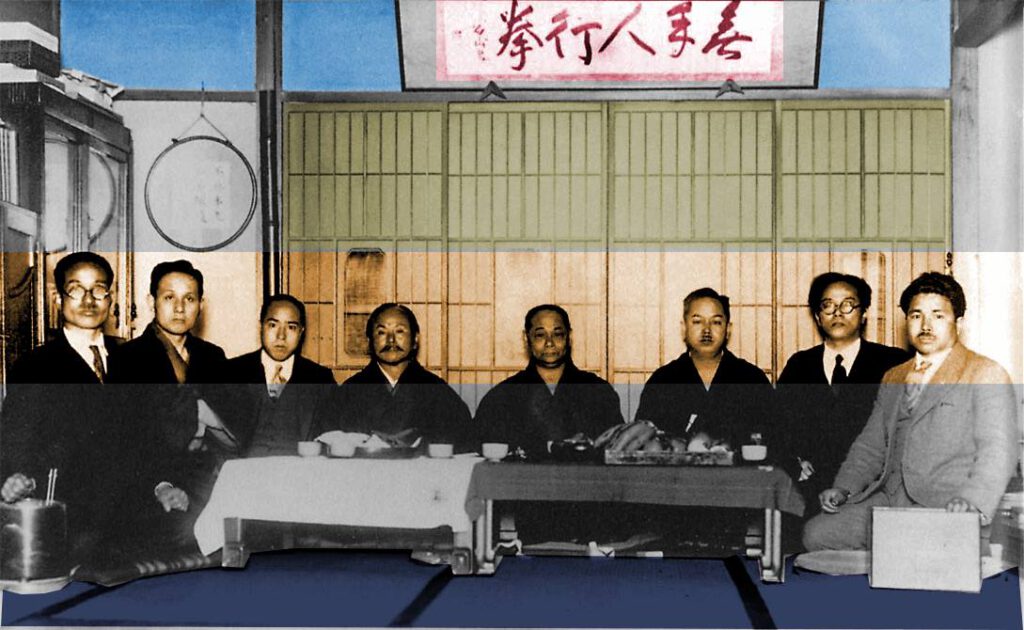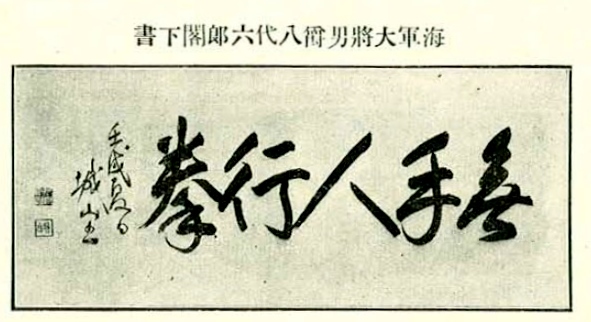Note the calligraphy in the upper middle of the photography. It shows the phrase “a handless man boxing” (無手人行拳), read from right to left. The phrase was taken from “The Quiet Hermitage”, a Chinese collection of 100 Zen Buddhist theoretical problems (Koan). The phrase in question is found in No. 48, where the issue of “Vimalakirti’s Non-duality” is related to. It uses the comparisons of „a handless man boxing“ and „a tongueless man speaking.“
Apparently, here it had been interpreted in a Karate sense as “a bare-handed (unarmed) man boxing.”
This reflects the early 20th century ideal and is an educated selection.

The photograph was taken at the Tokyo residence of Funakoshi Gichin in 1936 to discuss the then forthcoming publication of Nakasone Genwa’s new book, “Karate-do Taikan” (1938). The photo was later published in “Karate-do Ichiro” (1956) by Funakoshi Gichin. The persons in the photo are, from left to right: Toyama Kanken (Shudokan), Otsuka Hironori (Wado-ryu), Shimoda Takeshi (Funakoshi’s disciple), Funakoshi Gichin (Shotokan), Motobu Choki (Motobu-ryu), Mabuni Kenwa (Shito-ryu), Nakasone Genwa (Karate researcher), Taira Shinken (Ryukyu Kobudo).
The calligraphy was brushed by Yashiro Rokurō (1860–1930, admiral in the Imperial Japanese Navy and Navy Minister). In a memorandum, Tokuda Antei mentioned Yashiro as follows:
If I remember correctly it was in my 5th year at middle school [i.e. in 1910] when famous rear admiral Yashiro visited our school and he was astonished by our amazingly developed physique and he said that at some point in the future he will try to have it [karate] adopted by the central government.

Text above: “Calligraphy from His Excellency, Naval Admiral Baron Yashiro Rokurō (pen-name Shiroyama)”
© 2020 – 2024, Andreas Quast. All rights reserved.
